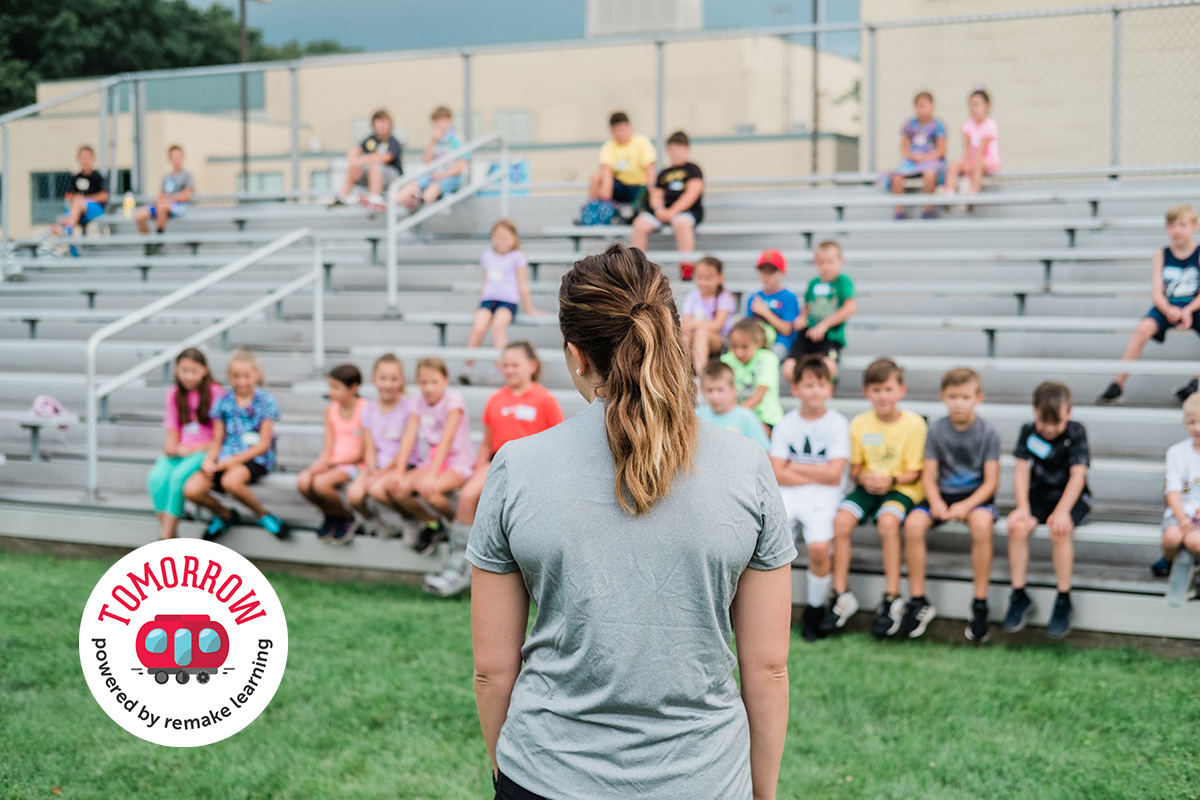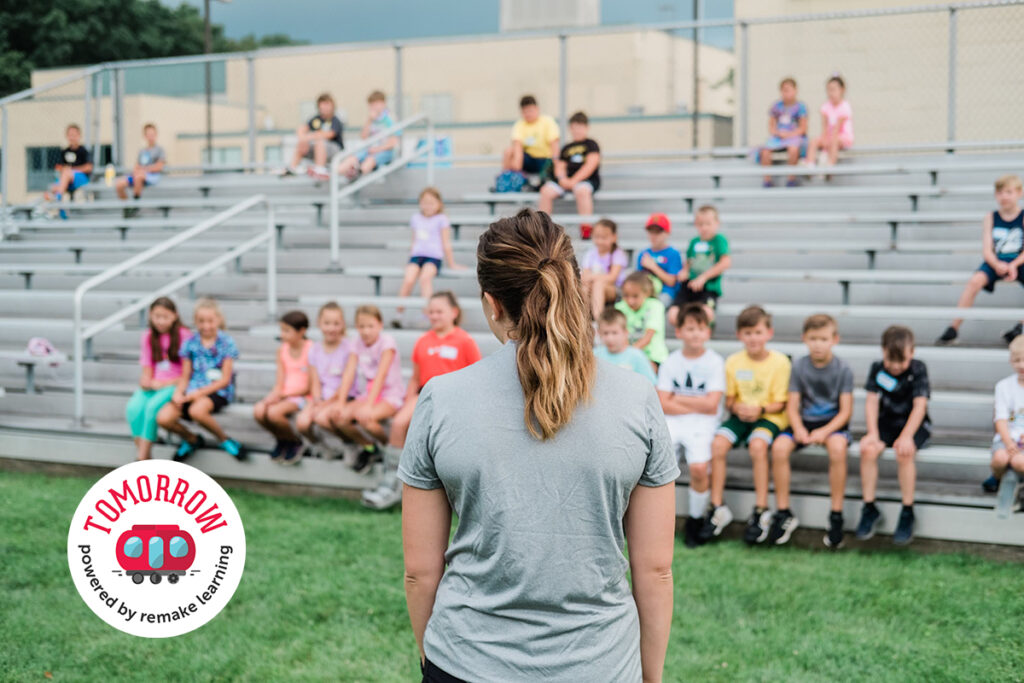Last June, as classes were ending for the kids of Duquesne City School District, teachers and parents knew one thing: The summer was going to matter.
After a frequently locked down, pandemic-disrupted school year, there was nothing these kids needed more than two solid months of outdoor exercise, safe social interaction and enriching summer programming.
The annual “summer slide” was more of a threat than ever, and so was the grinding effect of COVID anxiety. These students needed to spend their days with adults they knew and trusted, having fun and remembering what it’s like to be reasonably carefree.
The perfect solution? Summer camp at the Boys & Girls Club in their community.
But there was a problem. How would many of the kids get there? Most parents were busy working hard just to keep the bills paid. Even if they had a car, the adults weren’t home to shuttle kids back and forth to camp. It’s a problem that plays out in communities throughout the Pittsburgh region.
“We have a building,” says Dr. Lisa Abel-Palmieri, president and CEO of the Boys & Girls Club of Western Pennsylvania. “We have very highly qualified staff that offer literacy, STEM, arts, social-emotional support, mentoring, sports and recreation. And we can’t get kids to the building.”
And yet this time, transportation didn’t have to be a roadblock. A simple collaboration—one built on the highly successful work of Pittsburgh’s Learning Hubs—came together to solve this problem.
Rather than scramble to build and run their own summer programming, Duquesne City School District partnered with the Boys & Girls Club to pay for transportation so that students could attend summer camp this year.
Instead of reinventing something that was already working in their community, they stepped out of their silo and tapped into the learning ecosystem. It’s an approach that remains fairly uncommon. But what if school districts and out-of-school-time (OST) providers continued developing and growing these kinds of partnerships in the months and years to come?

Building on Pandemic Connections
The Learning Hubs brought schools and OST providers together out of necessity. This partnership kept learning going for hundreds of children when schools were closed during the early days of the pandemic. But it also did something more, says Stephanie Lewis, director of relationships at Remake Learning.
The Hubs helped “reveal the value of out-of-school-time programs. They showed that, yes, they are a place where kids are kept safe after hours. But also kids are learning there, whether it’s formal instruction or informal instruction,” Lewis says. “School districts also are recognizing that the staff and leaders at the out-of-school-time programs have really good connections with the families that they serve.”
For many kids, “OST providers are like their second family,” Abel-Palmieri says. “We have single moms and parents that rely on us to feed their kids dinner every night. We help them do their homework. We help them be emotionally healthy and physically healthy.”
As districts grapple with the challenge of supporting students’ mental health needs and engaging more fully with families, this is a perfect moment to partner with organizations that already have those relationships.
Powerful Ways Forward
Realizing the vital role that OST organizations play, the Allegheny Intermediate Unit hosted an event last spring where OST providers could pitch their services to local school districts. The summer camp transportation collaboration between the Boys & Girls Clubs and Duquesne City Schools grew out of that event and the small grant funding the AIU was offering.
So we wonder: What if school boards and others who make funding decisions locally and statewide were more fully informed about the value of OST programming?
Recent national and local research points up the importance of this piece of the learning equation.
New data from the nonprofit Learning Heroes and its research partner Edge Research found that parents enroll their children in OST programs to expose them to new experiences, ideas, and perspectives, and to help them find their passions, purpose, and voice. Parents whose children are enrolled in OST programs also say their kids do better academically, and are more prepared for the next school year and for college.
But despite the many benefits, these programs remain out of reach for some parents, often due to cost, time and transportation issues, according to the Learning Heroes research.
That’s where COVID relief funding and other dollars from school budgets could play a vital role.
Research within Pennsylvania also confirms the value of investing in OST partnerships. The “Return on Investment of Afterschool Programs” report by a joint government commission convened in Pennsylvania found that regular attendance at OST programs correlated with better academic outcomes and strong social-emotional skills. The report, published in June, also found that participation in OST programming can lead to a decrease in negative behaviors including juvenile justice problems, substance abuse and truancy.
The message is clear: Participation in good OST programming ripples out in positive ways throughout the K-12 school day.
And it echoes the findings from two statewide panels on post-pandemic learning convened by Remake Learning. The experts on those panels offered recommendations that included this mandate: “Make impactful connections among districts, teachers, out-of-school educators, and families.”
In response, Remake Learning will be working in the months to come with Timothy D. Jones, an educator and youth development specialist whose work is centered at the intersections of hip-hop pedagogy, youth development, and artistic empowerment. Jones will lead a series of workshops and critical conversations this fall with school and OST partners who collaborated over the summer. And mini-grants of $2,500 will be available to those partners to deepen their relationship this fall.
The funding may be used to host events or create resources with the goal of informing mindsets and practices in both partnering organizations.
Formalizing Connections
One roadblock to collaboration is finding time to plan out new partnerships. Currently, the bulk of COVID relief funding for education is given directly to school districts with little or no guidance on how it might be used for collaboration with community partners, Abel-Palmieiri says.
This “puts a lot of onus on the school districts to really do that community engagement and determine how community-based organizations—in particular out-of-school-time organizations—might be able to collaborate with them,” she says. And this is all happening while school leaders are incredibly busy with the task of teaching and supporting kids during the ongoing pandemic.
What if each school district had a Director of Relationships leading a team that focused on this work?
Slowly, fruitful collaborations between K-12 schools and OST providers are growing. With creative approaches and a commitment to forging truly connected learning for all kids, the new school year can bring even more progress.
“The onus is honestly on all of us,” says Abel-Palmieri, “to continue to break down silos and come together.”
